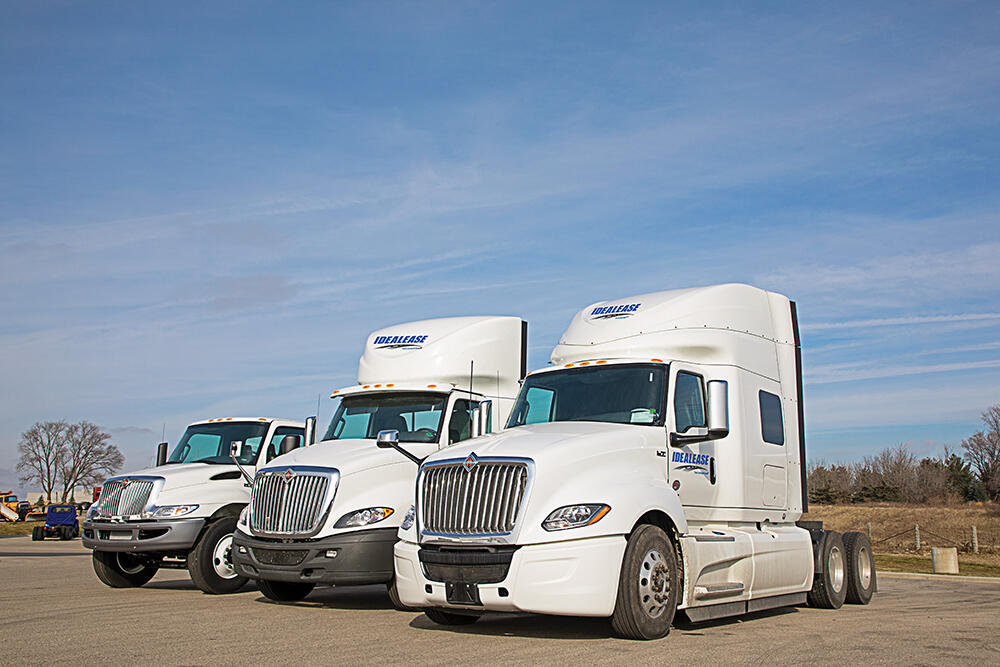CDL 101: The Basics

CDL 101: The 3 Classes of CDL and Why You Should Know Them
When it comes to moving your business and your customers forward, one critical—and often overlooked—element of our success is the drivers of our vehicles. Ensuring all drivers are road-ready requires a little CDL 101. The following is a primer on CDL classifications, restrictions, and endorsements, to help you be sure you have the knowledge that provides you with greater industry expertise and allows you to be an even better partner for your customers.
In 1992, the Department of Transportation (DOT) required all drivers of certain commercial motor vehicles (CMV) to meet specific knowledge and skill thresholds. Upon successful testing, the driver’s state will issue the appropriate commercial driver’s license (CDL) for the type of vehicle they wish to operate.
Drivers must obtain and carry a valid CDL if they operate interstate, intrastate, or foreign commerce and drive a vehicle that meets one or more of the classifications outlined below. Operating a CMV that doesn’t match the proper classification, including any restrictions or endorsements can result in the suspension or revocation of the driver’s CDL.
CDL Classifications
Class A: Any combination of vehicles that has a gross weight rating or gross vehicle rating of 26,001 pounds or more (11,794 kilograms), whichever is greater. This includes any towed unit with a gross weight rating or gross vehicle rating of more than 10,000 pounds (4,546 kilograms), whichever is greater.
Class B: Any one vehicle that has a gross weight rating or gross vehicle rating of 26,001 pounds, or any vehicle towing another vehicle that has a gross vehicle weight rating or gross vehicle rating that isn’t greater than 10,000 pounds (4,546 kilograms).
Class C: Any one vehicle or combination of vehicles that doesn’t fit the definition of either Class A or B, but are designed to transport 16 or more people (including the driver) or is transporting material defined as hazardous by 49 USC 5103 that is required to have a placard saying so by subpart F of 49 CFR Part 172 or is transporting any material listed as a select agent or toxin in 42 CFR Part 73.
CDL Restrictions
Restrictions on a license may be given if the driver takes a skills test in a vehicle that isn’t equipped correctly for the qualification being sought. To avoid restrictions, it is always a best practice to have the driver take a skills test in the same type of vehicle they want to be licensed for.
E: Manual Transmission - the driver takes the test in a vehicle equipped with an automatic transmission; they will not be qualified to drive a manual transmission.
L: Air Brakes - the driver fails the Air Brakes Knowledge Test, cannot correctly identify the components, conduct a systems check, or tests in a vehicle without air brakes.
M: Class B & C Only - the driver has a Class A CDL but earns their passenger or school bus endorsement in a Class B vehicle, they may only drive Class B and C passenger vehicles as well as school buses.
N: Class C Only - the driver has a Class B CDL but earns their passenger or school bus endorsement in a Class C vehicle, they may only drive Class C passenger vehicles or school buses.
O: No Fifth Wheel - the driver takes a Skills Test in a Class A vehicle equipped with a pintle hook or other non-fifth wheel connection, they cannot drive any Class A vehicle that has one.
V: Medical Variance - the driver has a medical variance reported by the FMCSA to the issuing state, which is updated in the Commercial Driver’s License Information System (CDLIS).
Z: Air Over Hydraulic Brakes - the driver takes the test in a vehicle with an air over hydraulic brake system, so they are not permitted to operate a CMV with full air brakes.
Endorsements
Drivers of special types of CMVs must pass additional tests to be permitted the following endorsements on their CDL:
H: Hazardous Materials - knowledge test only
N: Tank Vehicle - knowledge test only
P: Passenger - knowledge and skill tests
S: School Bus - knowledge and skill tests
T: Double/Triple Trailers - knowledge test only
X: Hazardous Materials and Tank Vehicle Combination - knowledge test only
Commercial Learner’s Permit Endorsements
For drivers-in-training, there are only three endorsements allowed on a commercial learner’s permit (CLP):
N: Tank Vehicle - the driver may only operate an empty tank vehicle, and only one that has been purged of any previous material.
P: Passenger Vehicle - the driver may only operate a passenger CMV when carrying federal or state auditors or inspectors, test examiners, other trainees, and the CDL holder accompanying the driver.
S: School Bus - the driver may only operate a passenger CMV when carrying federal or state auditors or inspectors, test examiners, other trainees, and the CDL holder accompanying the driver.
Individual states may have more restrictive categories for any class of license, or additional codes for restrictions and endorsements that are not mentioned in federal regulations. Please check with your state government for more information.
It’s easy to take the expertise and professionalism of CMV drivers for granted, but we should never overlook the fact that they are also ambassadors to customers. They represent who you are and how you do business, whether they are in the dock or on the road.






